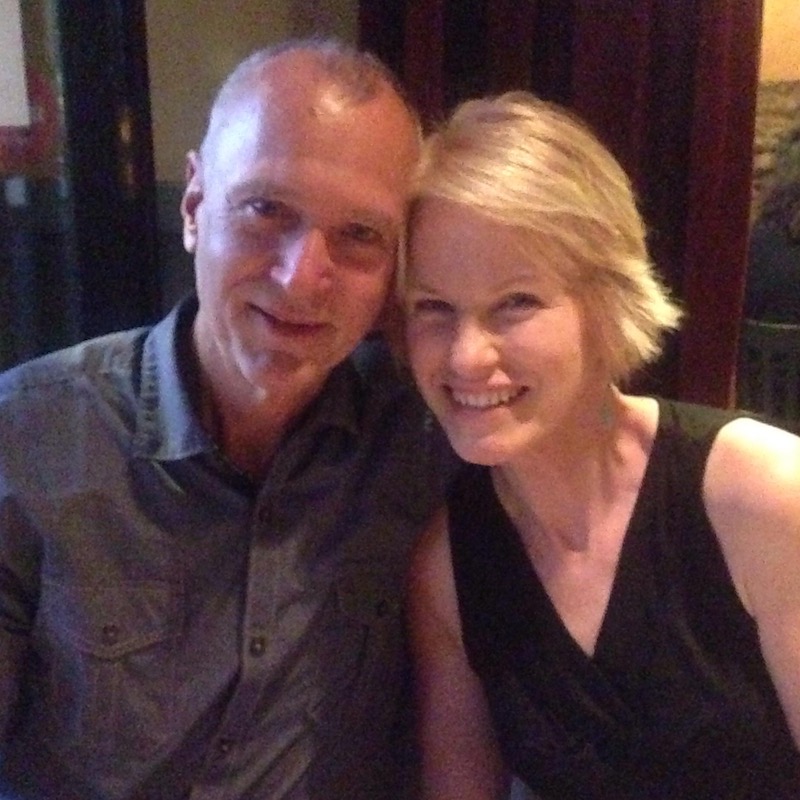Sandy and I floundered in our relationship for many years simply because we did not ‘begin with the end in mind’.
We lacked a shared relationship vision.
We had many good times, but we also lived in seasons of conflict, because we were not actually sure of who we were or where we were going as a couple.
And our differences affected everything from how we parented our children to what music we listened to.
I thought I knew who I was. And she was pretty sure she knew who she was. But as a couple? We didn’t have the tools to help us bring it all together until years later.
Living on parallel tracks is not living the full potential of your marriage.
However, beginning with the end in mind can help you unite your hearts and unleash your passions.
In Imago Relationship Therapy we learned a powerful tool called the Relationship Vision. It helped us forge a mutual vision for our life together.
I want to share it with you because – whether you’re in a good place, or whether you’re floundering like we were – marriage works best when you begin with the end in mind.
A wise king named Solomon wrote, ‘Where there is no vision the people perish.’ He was saying a society that lacks the divine insight that informs them of their true identity and purpose will always head in the direction of anarchy and destruction.
The same is true for a marriage relationship.
If you don’t really know who you are or why you’re here, the result can be a kind of anarchy and a relationship that self-destructs.
Having a shared vision for your relationship can help you align your paths in such a way that you can fulfill your destiny together.
Here’s how to do it. And I’ve shared our own Relationship Vision below as an example.
How to write your Relationship Vision
Click on this link, print out two copies of the Relationship Vision form, and use it with the instructions below.
- Envision your marriage how you would like it to be.
- Make a list of positive statements beginning with the word ‘We’ that describe the kind of relationship you would like to have.
- State them in the present tense as if the future were already here.
Examples:
‘We enjoy each other’s company.’
‘We spend time together doing things we both enjoy.’
‘We are financially secure.’
‘We have a stable, intimate relationship both emotionally and physically.’
‘We are a great team parenting our children.’
‘We serve our community together by ________ .’ …etc.
- Share your sentences.
- Underline the items you have in common.
- If your partner has written sentences you agree with but didn’t think of, add them to your list.
- For now just ignore the ones not shared.
- Take your expanded list and rank them in importance.
- Work together to design your mutual relationship vision listing each sentence in order of importance.
- Post it where you can visualize it and recite it daily.
- Once a week read it out loud to each other.
Doing this will help you begin to actually experience this marriage that you are visualizing and declaring.
Sandy and I keep ours in our journals to be read everyday. Here’s what it looks like.
RELATIONSHIP VISION
Chuck and Sandy Starnes
We listen to God everyday and yield to His Word to us.
We have a stable and intimate relationship both emotionally and physically.
We bring God’s presence and peace everywhere we go.
We live in the hope of healing and reconciliation in our family and other relationships.
We give of our time and resources, contributing to the underserved in our community and around the world.
We create a mutual purpose for every major decision we make.
We are co-creators of our life work together.
We go on regular adventures exploring the wonders of the world together (including spontaneous excursions).
We work together on home and garden projects.
We explore culinary delights together.
We listen to Baroque music together.
We trust God for His provision every day and are financially secure.
Notice how our Relationship Vision encompasses big priorities like our faith and life work, and smaller things like working on our home and our love of cooking together.
Committing to a common vision means that we make some choices to leave behind things we would want to do individually to invest the time and energy into doing things together.
The priority must be the relationship over our individual desires.
This may seem like you’re giving up a lot. But what you receive because of the increased intimacy you experience with each other more than compensates for anything you might leave behind.
Sandy does not like the same music I do. But we both love Baroque music. So guess what we listen to together?
Stating something you want in the future as if it were already realized today keeps your hope alive.
For example, not all the relationships in our family are where we want them to be.
We do not let that define us. But we do we live every day with hope that healing and reconciliation will happen in the future.
Stating it in the present helps us move toward that future reality with confidence.
I hope this helps get you started!



